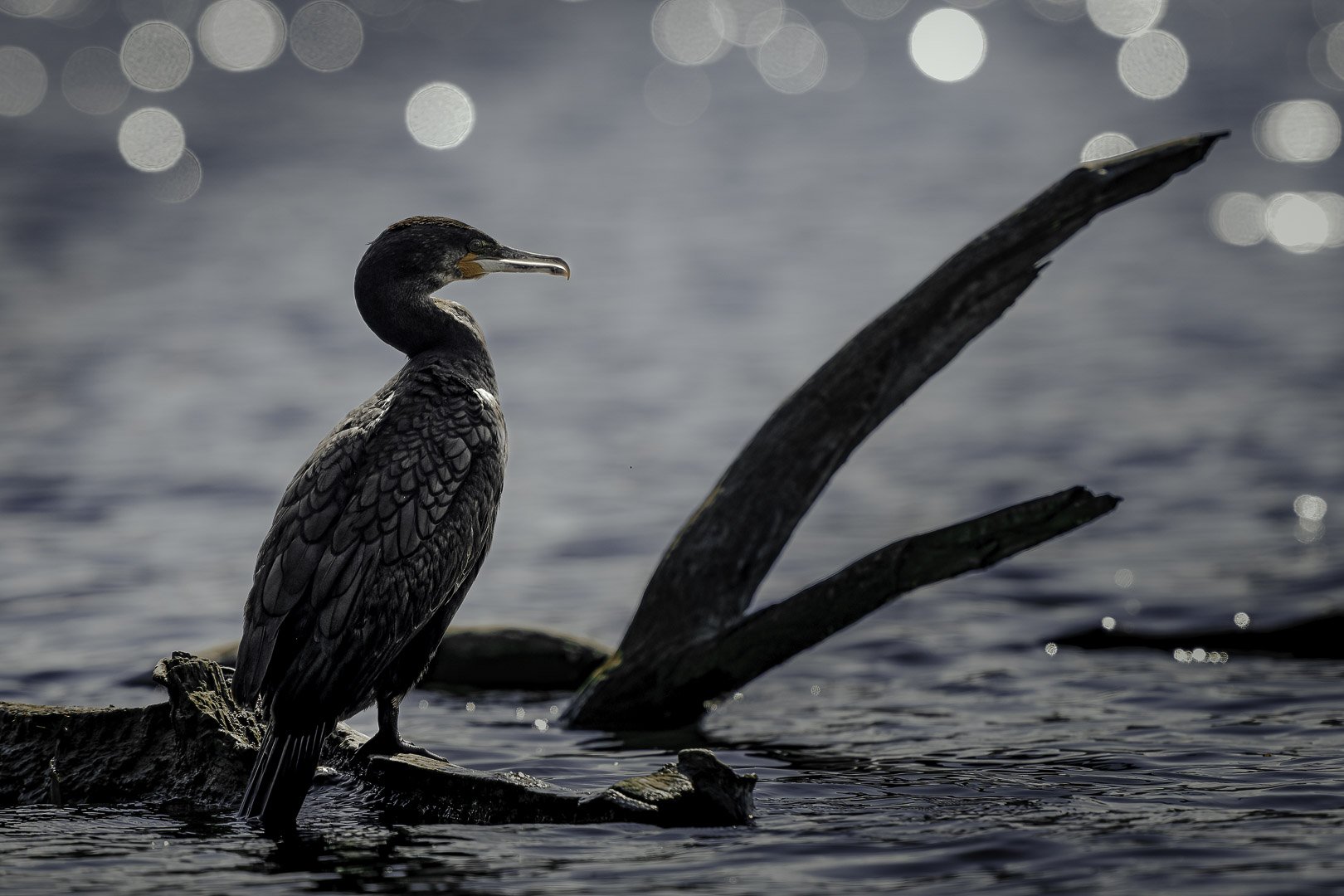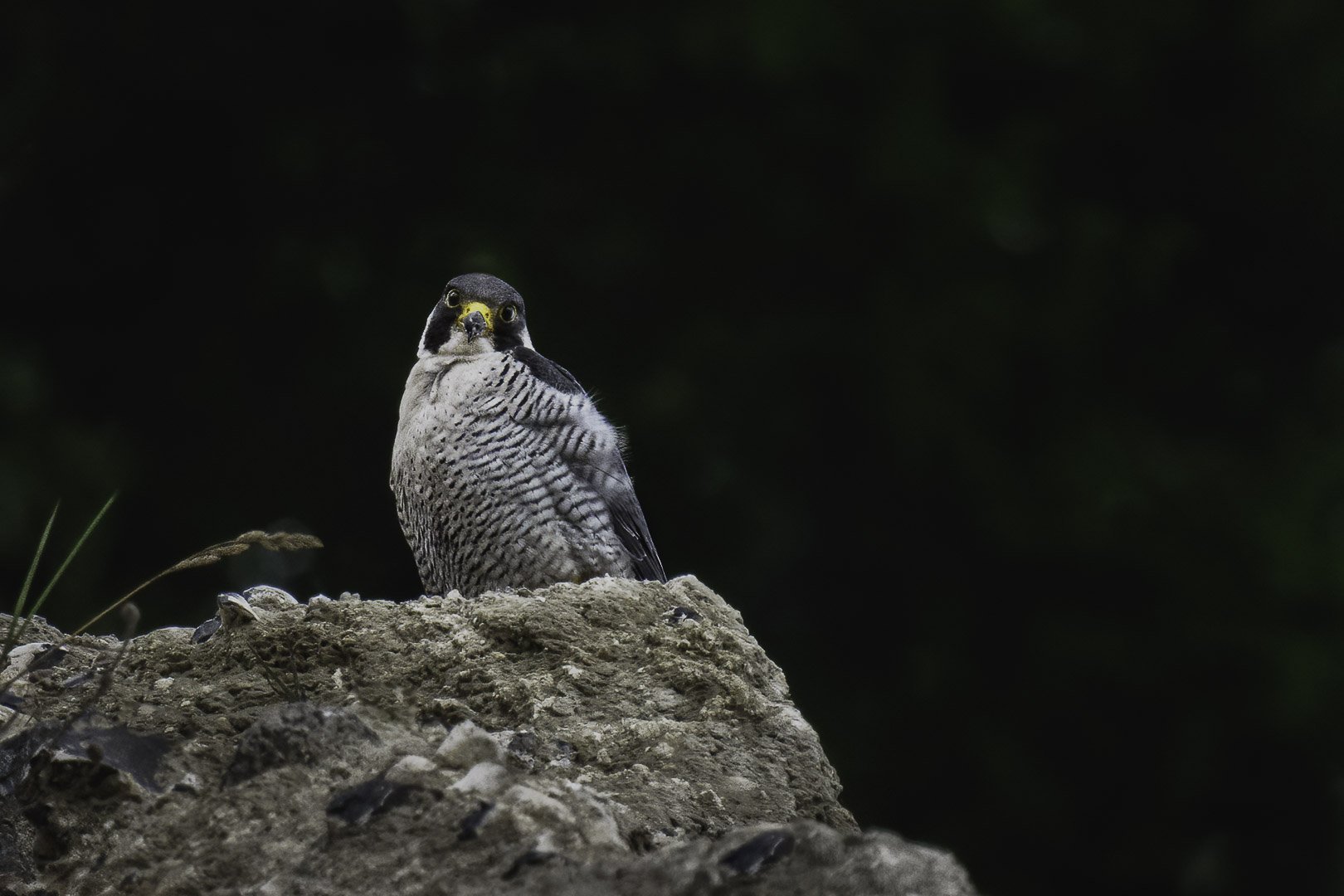Bee-eater (Merops apiaster) from the Palatinate: exotic, colorful, wild
Bee-eater taking off from its perch - Sony a1 + 400 mm f2.8 + TC 1.4 f5 - 560 mm - 1/3200 - ISO 640
Exotic Color Splendor in the Wild
All good things come in threes, so the saying goes, and it wasn't entirely wrong. In my attempts over the past few years to photograph bee-eaters (Merops apiaster), luck was not on my side. The first time I tried was a bit late in the year, it was early August, and disappointment quickly followed: the bee-eaters had already left for their winter quarters.
Being a native of Saarland, my wife and I took the opportunity another time on our way to the countryside to make a stop in the Palatinate and try our luck again. On an early May day, we looked out for the brilliantly colored birds. Unfortunately, again without success, but we did see a whinchat for the first time, which was also a joy for my wife and me.
Whinchat (Saxicola rubetra) as a nice consolation during the unsuccessful attempt to photograph bee-eaters
On the way back from Saarland to Bavaria two weeks later, we finally succeeded, and we were able to observe and photograph the bee-eaters for the first time. A wonderful experience.
The day was cloudless and quite summery. Hares crossed our path to the observation point, and when we arrived, the light was golden. Ideal conditions to observe and photograph the colorful birds.
Hare in the golden morning light approaching us - Sony a1 + 400 mm f2.8
Photographic Challenges on Site
Even though the light was beautiful at first, there was the challenge from the observation hut that I had strong side light and perching branches in the front area were oriented against the sun. But as it turned out, this problem was not so acute because the front breeding wall was renewed and almost no nesting holes were present in the front area. The birds therefore stayed more in the back part of the sand pit where most of the nesting holes already existed. Occasionally, a few of the exotic birds came closer to the observation hut, but mostly they were still too far away. Generally, I had to deal with hard side to backlight throughout the morning at this spot. There was only a short time window on this cloudless day to photograph without too harsh light. Nevertheless, there were strong shadows on the plumage depending on the direction the birds came from.
Perch in the bee-eater observation hut with a6700 + 400 mm f2.8 Set-up - iPhone 13 pro
You had to be ready at all times with your camera, as the chances of getting the animals close to the lens were not that good. This allowed me to get a few shots where the distance was not too great. One bird even briefly perched on one of the branches that were oriented against the light, so you can imagine what I meant by backlight.
Despite these challenges, I am more than happy that I was able to take these shots and observe the birds.
Perch branch oriented against the light-Sony a1 + 1.4TC + Sony 200 - 600 mm f5.6/6.3 - 840 mm, f9, 1/2500, ISO 1250
Equipment Recommendations
The longer, the better. You should have a telephoto lens with at least 400 mm, preferably 600 mm, for full-frame. If you can use 800 mm, that is the right focal length. Since there are no nesting holes near the observation hut anymore, the animals mainly stay in the back part of the pit and are generally too far away. However, this can change if the birds expand their nesting holes towards the observation hut in the future.
Bee-eater gracefully in flight - Sony a1 + 1.4TC + Sony 200 - 600 mm f5.6/6.3 - 840 mm - f5 - 1/2500 - ISO 800
Equipment I used:
Sony A1
Sony 400 mm f2.8 GM OSS
Sony a6700
Sony 200–600 mm f5.6/6.3 G OSS
Sony 1.4TC
Sonx 2xTC
Full-frame shot at 560 mm without crop, usually the closest point where the birds perched - Sony a1 + 400 mm f2.8 + TC 1.4 - f5 - 560 mm - 1/3200 - ISO 800
As already described, I couldn't use most of the bird shots because the distance to the bird perches and the hut was too great. But I was lucky twice to photograph a few bee-eaters relatively close to the observation hut in a bush.
The two had to be cropped more in the image - Sony a1 + 400 mm f2.8 + TC 1.4 - f5 - 560 mm - 1/3200 - ISO 400
Arrival in Germany and Activity of Bee-eaters (Merops apiaster)
The bee-eaters roughly breed in Germany between May and August. They overwinter in Africa, especially in the transition area between rainforest and savannah, and between the Atlantic coast and the Congo Delta in the countries of Gabon, Republic of Congo, Democratic Republic of Congo, and Angola (Source: NABU). You can read a detailed documentation about the wintering area of the bee-eaters at NABU (in German).
Since bee-eaters hunt insects, you don't have to be there at 3 a.m. They become active when the insects are active too. Most of the time, the sun is not so low anymore.
Bee-eater approaching the nesting hole in the sand wall - Sony a1 + 400 mm f2.8 + TC 1.4 - f5 - 560 mm - 1/2000 - ISO 1250
A few facts about bee-eaters
Appearance of bee-eaters (Merops apiaster)
One of the pictures that I managed to capture from a closer distance - Sony a1 + 400 mm f2.8 + TC 1.4 - f5 - 560 mm - 1/3200 - ISO 640
The bee-eater is a slender bird with strikingly colorful plumage. The upper parts of the body are brown and yellow, while the wings are turquoise, green, and the beak is black. The bee-eater reaches a length of 27 to 29 cm, including the two elongated central tail feathers. The sexes look alike, but the females' plumage tends to be greener than golden.
Plumage outside the breeding season
Outside the breeding season, the plumage of the bee-eaters is significantly paler, with a blue-green back and without the elongated central tail feathers. Juveniles resemble adults outside the breeding season, but have fewer color variations in their plumage.
Molt and breeding plumage
Adult bee-eaters begin to molt in June/July and complete this process in August/September. In winter in Africa, another molt occurs, during which they acquire their breeding plumage.
Observation hut from the outside - iPhone 13 Pro
Location and behavioral rules
If you want to know exactly where I photographed the colorful birds, you can find out at NABU. The place is publicly known and is intended to direct photographers and observers in this direction so that other breeding sites are not visited and disturbed. In Rhineland-Palatinate, the area is cordoned off, and an observation hut has been set up for this purpose.
Follow the rules
In recent years, there has been a significant influx in and around this area, and some human behaviors have not been appropriate towards nature and fellow human beings. Parking has also led to chaos, which is why there is now an absolute stopping and parking ban on the parallel federal road.
About 1 km from the observation point is a village with a church and a cemetery, where there is also a parking lot. This parking lot is recommended. From there, you can walk to the bee-eaters. (Source: NABU: Video from NABU Palatinate https://youtu.be/sL_CCoIGVyM?si=JMeApDUxA-qZaIxK)
I can only say, use this path, it is really not far, and a well-developed foot and cycle path leads directly there. This way, there is no unnecessary stress, and everything is more relaxed. Please do not block the observation hut so that everyone can enjoy it, both observers and photographers. The rule here is not "first come, first served". It is a small hut, and everyone wants to see the great birds.
Good light and have fun on your next photo adventures.


























